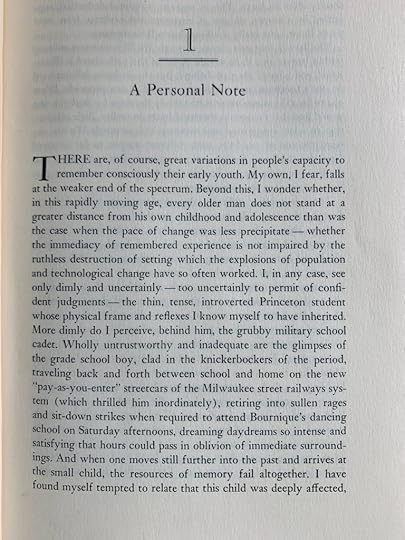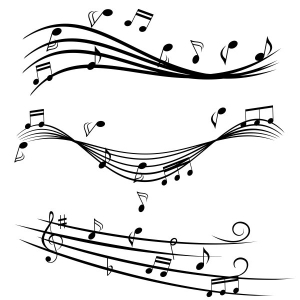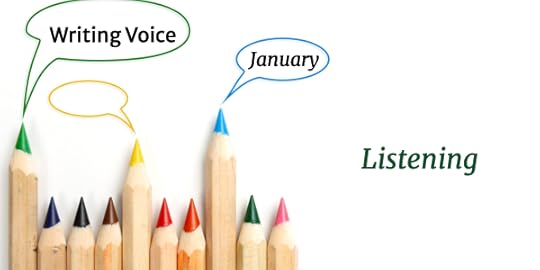Anne H. Janzer's Blog, page 2
May 20, 2025
The Case of the Missing Subject

There’s a subtle thief hiding in much nonfiction writing, stealing the life from sentences. Yes, it’s time to talk about dummy subjects—when “it” and “there” stand in for an undetermined subject in a sentence.
There’s nothing grammatically wrong with dummy subjects. But — and there’s a “but” of course — this usage dims the power of your prose. It pays to search them out, as they may weaken your writing voice.
***
Did you notice that those first paragraphs used it and there as subjects? I confess: Those sentence structures come to me easily. For people who write about abstract topics (policy makers, academics, lawyers), dummy subjects can become second nature.
But if you rely on them too much, your prose can be boring. And they have a dark side; they may hide the true actor or the author’s views. We can do better.
Detecting the dummiesYou don’t have to be Sherlock Holmes to spot the dummy subjects in your writing. They usually take one of two forms.
The existential there:
There is a reason for my actionThere are people who say…The indeterminate it, where ‘it’ doesn’t refer to any past noun readers can easily find, but points at some abstract idea you have yet to present. For example:
It is obvious that…It is time to …It’s no mystery why we write with dummy subjects—they are useful in writing and common in speech. (I just used one so I could use the phrase “it’s no mystery.”)
We may not know the true subject of a sentence, or don’t want to shine the spotlight on the actor. Using” “there” might be easier than figuring out who’s responsible. (We also use passive voice to avoid naming the subject, but that’s a topic for a different post.)
Dummy subjects often thrive in corporate writing or academic writing—situations in which writers deal with abstractions rather than people. Yet those types of writing also benefit from fewer dummies.
Find the real actorDummy subjects keep your writing more firmly in the realm of the abstract, rather than the concrete. We can’t picture what “there” looks like. Running into a vague “it” may send us hunting for the reference like a detective.
You might need to think more deeply about your subject to replace the dummies, but the effort usually pays off. (Seriously, I started to write “it’s usually worth the effort.” This habit is hard to kick.)
Let’s revisit the start of this post. Here’s the first sentence.
There is a subtle thief hiding in much nonfiction writing, stealing the life from sentences.
The word “thief” elevates the sentence—bringing energy and meaning to the sentence at the fifth word. But, the first three words are essentially throw-aways, or what my friend Erin Lebacqz calls a “slow lead-in.”
What if we starting with meaning right away and simply make thief the true subject:
A hidden thief is stealing the life from our sentences.
Ooh, that is more interesting. I cannot yet picture the thief, but I’m intrigued.
Or, let’s keep the detective/theft analogy while bringing in the reader directly:
A sneaky thief might be hiding in your nonfiction prose—and stealing your voice.
You get the idea.
Making peace with the dummiesIf your first drafts are loaded with dummy subjects, they may reflect the way your brain assembles ideas into words. You are not alone.
I’ve made peace with my first drafts, as I’m too old to change thought patterns established over decades. But, I can always revise, for my readers’ sake.
I humbly offer the same suggestion to you: Write your first drafts without judgment. Then, do a global search for dummie subjects:
there is, there are, or there’s it is or it’sFilter out the legitimate uses of those words, like where ‘it’ replaces a previous noun.
Then, rework some of those sentences to use real subjects, even if you have to use an abstract concept. You’ll probably find that eliminating the dummies gives the sentence more energy. You may choose to let a few remain, as they reflect natural speech patterns. But as a general rule, dial down the dummies.
Related contentDummy subjects often show up when you write about abstract concepts. Here are a few resources on dealing with abstractions:
Writing in the Workplace: Abstract Concepts
Writing to Be Understood has a chapter on abstractions.
Erin Lebacqz has created a wonderful video on slow lead-ins and “fluff” words in business writing, which applies to all kinds of writing. Watch it here.
May 6, 2025
Writing Voice: Paragraph Patterns
“I love the way my favorite author breaks their content into paragraphs.”
Has anyone ever said that? I doubt it. Paragraphs are overlooked workhorses of prose writing.
You may have learned how to write the “five sentence paragraph” in school: one topic sentence, three detail sentences, and a conclusion. Once you survived that ordeal, you probably never thought about it again. (I certainly didn’t.)
As readers, we rarely notice the writer’s paragraph decisions except in extreme cases — like opening a book and finding that the first two pages are all one paragraph.
For example, here’s the first page of the first volume of George Kennan’s memoirs (by a man who would not even write a short telegram!)

Paragraphs operate on three distinct levels for the reader:
Meaning: Sentences within a paragraph belong to and support the same idea. Paragraph breaks give the reader’s brains a nanosecond to synthesize that idea and move on. Visual impact: Paragraphs arrange the meaning on the page or screen. The breaks offer welcome white space. Our eyes notice the density of the words.Voice: Paragraph breaks contribute to rhythm and flow. Like a subtle movie soundtrack, the paragraph structure can set a mood—especially when a single sentence paragraph stands alone in a sea of longer ones.Assess your paragraph habitsMost of us pick up habits and expectations, both as readers and writers.
As readers of physical books, we expect to see long paragraphs in certain types of works, like immersive fiction and academic works. Reading online, however, long paragraphs may deter us. (When I see a wall of online text, I am always tempted to click away.) Because I do so much writing for online reading, my default has shifted to shorter, two- to three-sentence paragraphs. When writing books, I opt for longer ones.
(The paragraph above looks pretty long on my blog, and I’m so tempted to break it up!)
I am also a big fan of planting pithy points or irreverent asides as single sentence paragraphs. Like the one above.
Are you curious about your own expectations? Explore a few writers that you enjoy and, just as we did with last month’s sentence patterns, look for their paragraph patterns. Notice of the interplay of long, short, and medium-length paragraphs, and see if you can detect a pattern. Then, try this month’s exercise yourself.
The exerciseFind something you’ve already written — at least a few pages worth of prose — and rewrite it alternating between long and short paragraph.
Long Short Long Short Long ShortThe rules are flexible. You can start with either a long or short paragraph, and you get to decide what counts as short.
You may need to rearrange ideas to make it work. If your initial draft uses many long paragraphs,
Try isolating important points or entertaining asides in their own paragraphs.Make a transitional sentence its own paragraph and see what that does to the flow.If the initial paragraph has many short paragraphs, look for connective threads that link sentence or ideas together and group them.
Then, compare the drafts to see if and how your writing voice has shifted between the version.
If you added short paragraphs, does that make your voice seem less formal? More emphatic? If you added long paragraphs, does the result feel more serious? Flowing?Pay attention to what this simple tool teaches you. Compare your default patterns to the choices of your favorite authors. You might decide to change your own paragraph habits to refine your writing voice.
More to exploreThis topic maps to the sixth section of The Writer’s Voice. Find more voice-related exercises there — as a print book from Amazon, Bookshop, or as a PDF directly from me.
April 15, 2025
Tiny Writing Experiments

Do you have an abandoned manuscript in somewhere in your files? (Hint: most people who consider themselves writers do.) Not all ideas grow into published works like books, nor is every idea worth polishing and publishing. And some need time to incubate.
Too often, writers see that lack of completion as a personal failure. Having abandoned one book or story, they worry about their ability to complete anything. Or, having resolved to become a published writer this year, they feel dismayed if it doesn’t work out.
Aggressive writing goals might motivate, but they can also damage us.
What if we approach our writing objectives as a series of experiments through which we learn and grow? In the long run, we might cover more ground than sticking with rigid goals. And we’ll certainly be happier.
The experimental mindsetAnne-Laure Le Cunff’s new book Tiny Experiments: How to Live Freely in a Goal-Obsessed World preaches the dangers of linear goals. Instead, she suggests approaching life with curiosity, as a series of experiments.
Although this isn’t a book about writing, the experimental approach to productivity certainly works well for writers, who tend to be curious and creative.
Le Cunff urges us to create small experiments (which she frames as “pacts”) to test assumptions and see what works for us.
A pact is simply a commitment to run a little test, framed like this:
I will do [activity] for [duration]My author career began with exactly that kind of a pact.
The pact that led to a bookBack in 2014, after working for decades as a professional writer, I wanted to write a book but had no idea if I could pull it off. My own opinions and research, in a book-length form? It felt like a big stretch. I wasn’t even certain that my ideas would coalesce into a book.
Instead of trying to brute force my way through outlining a manuscript, I framed a short experiment that Le Cunff would call a pact: I would write 1000 words a day on my topic for 10 days to see if I could come up with anything worthy of a book.
That’s it. No pressure, just an exploration.
Every day I rummaged around in my brain for ideas, opinions, and observations about the topic. I’d slap headings onto different sections to organize the results when I was done. Sometimes my daily words included questions to myself. It wasn’t pretty or structured.
After 10 days, I had 10,000 words of content. And that work showed me the general outline of the book, as well as my ‘foundational’ concepts — the different ways that customers perceive value in the products they purchase.
If I hadn’t come up with the content, I would have put the idea aside and tried something else. That’s the beauty of tiny experiments—they open up possibilities without committing us to a path that we cannot yet understand.
Embracing the limitsThe power of the pact comes from lowering the bar in terms of both effort and time.
I embraced what Le Cunff calls “intentional imperfection.” I wasn’t trying to come up with a perfect outline or beautiful prose. And my pact had a strict time limit of ten days. Writing a book sounded hard. But, ten days of freewriting? I could certainly do that.
Most of those initial words never made it into the book’s manuscript. But they got me where I needed to go. Nothing is wasted in writing.
Pacts help us make good mistakes and learn from them. At the end of the pact, we evaluate what we’ve learned. We might pause, pivot, or continue on our way. These small doses of commitment teach us much about ourselves. And when they don’t work, they aren’t “failures” but experiments from which we learn.
What experiments might you run?How might you conduct tiny experiments in your writing life?
It will depend, of course, on what you’re trying to learn. Would you simply like to find more time to write or explore subjects? Consider a simple pact like this:
I’ll write for 15 minutes every day for 15 days.Then, assess it after 15 days and see if you want to keep going, or if it has given you fodder for a new experiment.
You can use pacts to explore a new genre or slip a new practice into your writing life.
Here are a few ideas to start you thinking.
I will draft one flash fiction/nonfiction piece every day for 10 days.I will read a poem every morning for the next two weeks and see if it changes the way I encounter the world.I’ll write morning pages every day for a month and see what happens.I’ll work on my book at least 20 minutes every day except Sunday for the next two months.If you dream of writing a nonfiction book, you might try my original 1,000-words-a-day-for-10-days pact and see where that gets you. (I’ve given the exercise to multiple prospective authors trying to figure out exactly what book they want to write.)
But remember, these are experiments, not goals. Focus on the process and learning, not the end results. At the end of the period, evaluate what you’re doing.
If you could not manage daily work, then that’s a lesson learned. What changes would you make?If life got in the way but you want to keep going, how might you alter the pact for right now? Perhaps something more vital has come up—you can pause the pact. Want to keep it going? Go ahead. Extend the duration of the pact or make it part of your life.These pacts focus on process, not on output, and certainly not on other people’s responses to our work. By approaching the process with curiosity, we may discover overlooked strengths and possibilities.
Our lives are fluid and changing. This experimental mindset is key to thriving and exploring the work you most want to do. Perhaps you’ll learn that writing a book isn’t for you, but you’d like to try flash fiction. Or poetry. Or you’d rather dedicate your writing to witty emails to your friends.
Hold tightly to the process during the pact, but loosen your grip on the results. Then see what happens.
More on this ideaFind the book Tiny Experiments on Amazon or Bookshop.org. (Affiliate links.) Or order it from your bookstore!
Here’s a post about another experiment I ran—although, one year was a lengthy commitment! My Story Journal Experiment.
April 1, 2025
Writing Voice: Sentences that sing

If punctuation is the percussion of your prose, then sentences sing the melody. Like songs, they carry the meaning while landing on the reader’s inner ear in subtle ways.
Sentences are also scaffolds for meaning. Bloated sentence structures can bury profound insights. As writers, we have to balance both functions: meaning and sound.
While we could talk all day about sentence structures, let’s start with the easiest variable to control: length.
Too many long sentences strung together might bury the internal rhythm of your writing or strain the reader’s brain. Pages of short ones might make the writing seem dull.
This month, let’s experiment with sentence length and its effect on the writing voice.
First, a warm-upLook at a passage by a favorite author and decide whether you’d categorize each sentence as long or short, where a “short” sentence meets the following qualifications:
You can read the whole thing easily in one breath.It has no em-dashes, parenthetical phrases, colons or semicolons.It doesn’t include many commas or dependent clauses.Mostly, you can just eyeball it. Does it look long or short? Does it “sound” long or short to your inner ear? (If it feels “medium,” then compare it to the sentence surrounding it.)
For example, here’s the sentence pattern for the start of a newsletter by the fantastic writer George Saunders:
Long Long Short Long Long Short Long Long LongTake something that you’ve written and do the same analysis. What do you see?
You may notice that much of your writing uses similar kinds of patterns. We fall into writing habits we may not even notice.
The ExerciseChoose a simple sentence rhythm pattern that deviates from your normal. For most people, I suggest Long-Long-Short.
If your writing already meets this pattern, take on more of a challenge. You could experiment with Long-Short-Long-Short (a limping march through the prose.) Or, dial up your long sentence quotient with a Long-Long-Long-Short pattern.
Find a passage you’ve written and revise it into the pattern. As you figure out how to rearrange the sentences, pay attention to meaning as well as sound.
String shorter sentences into longer ones by looking for connections between the ideas.Isolate your most powerful ideas in short sentences.How does this work affect your writing voice?
Of course, you’re never going to choose to write only in rigid sentence patterns. But this experiment can help you see where you might benefit from loosening your habits. You may discover that you like the impact of sprinkling shorter sentences in the long ones, or the flow that comes from longer sentences. The choice is yours.
Related ContentThis is the second exercise I’ve shared from the Sentence section of The Writer’s Voice. The first, and a favorite, is the One Sentence Per Line exercise. If you haven’t tried that yet, give it a go.
Notice: JavaScript is required for this content. var formDisplay=1;var nfForms=nfForms||[];var form=[];form.id='5';form.settings={"10":{"label":"Sign Up","class":"","show_help":"0","help_text":"","show_desc":"0","desc_pos":"none","desc_text":"","conditional":""},"11":{"honeypot_save":""},"12":{"class":"","show_desc":"0","desc_pos":"none","desc_text":"","conditional":""},"18":{"label":"Sign Up","class":"","show_help":"0","help_text":"","show_desc":"0","desc_pos":"none","desc_text":"","conditional":""},"19":{"label":"Textbox","label_pos":"above","default_value":"","mask":"","datepicker":"0","email":"0","first_name":"","last_name":"","user_address_1":"","user_address_2":"","user_city":"","user_zip":"","user_phone":"","user_email":"","user_info_field_group":"1","user_state":"0","user_info_field_group_name":"","user_info_field_group_custom":"","input_limit":"","input_limit_type":"char","input_limit_msg":"character(s) left","req":"0","class":"","show_help":"0","help_text":"","show_desc":"0","desc_pos":"none","desc_text":"","calc_auto_include":"0","admin_label":"","num_sort":"0","conditional":""},"20":{"label":"Text","default_value":"<a href=\"http:\/\/annejanzer.com\/wp-content\/uploads\/2016\/09\/emaillogowp.png\"><img class=\"aligncenter size-thumbnail wp-image-3252\" src=\"http:\/\/annejanzer.com\/wp-content\/uploads\/2016\/09\/emaillogowp-150x50.png\" alt=\"email logo wp\" width=\"150\" height=\"50\" \/><\/a>\r\nWrite much? Me, too. I've been delving into how to optimize my writing practices for creativity and productivity, and I'm sharing what I've learned.\r\n\r\nSign up to get once-a-week posts by email.","desc_el":"div","class":"","show_desc":"0","desc_pos":"none","desc_text":"","conditional":""},"21":{"honeypot_save":""},"27":{"label":"Text","default_value":"<a href=\"http:\/\/annejanzer.com\/wp-content\/uploads\/2016\/09\/emaillogowp.png\"><img class=\"alignright size-thumbnail wp-image-3252\" src=\"http:\/\/annejanzer.com\/wp-content\/uploads\/2016\/09\/emaillogowp-150x50.png\" alt=\"email logo wp\" width=\"150\" height=\"50\" \/><\/a><em><strong>Want to read more\u00a0posts like this?<\/strong><\/em> Sign up to receive writing posts by email, every other week.\u00a0You'll also receive a guide to overcoming common barriers to writing.","desc_el":"div","class":"","show_desc":"0","desc_pos":"none","desc_text":"","conditional":""},"28":{"label":"First Name","label_pos":"left","default_value":"","mask":"","datepicker":"0","email":"0","first_name":"1","last_name":"0","user_address_1":"","user_address_2":"","user_city":"","user_zip":"","user_phone":"","user_email":"","user_info_field_group":"1","user_state":"0","user_info_field_group_name":"","user_info_field_group_custom":"","input_limit":"","input_limit_type":"char","input_limit_msg":"","req":"0","class":"","show_help":"0","help_text":"","show_desc":"0","desc_pos":"none","desc_text":"","calc_auto_include":"0","admin_label":"","num_sort":"0","conditional":""},"29":{"label":"Email Address","label_pos":"above","default_value":"","mask":"","datepicker":"0","email":"1","first_name":"0","last_name":"0","user_address_1":"0","user_address_2":"0","user_city":"0","user_zip":"0","user_phone":"0","user_email":"1","user_info_field_group":"1","user_state":"0","user_info_field_group_name":"","user_info_field_group_custom":"","input_limit":"","input_limit_type":"char","input_limit_msg":"","req":"0","class":"","show_help":"0","help_text":"","show_desc":"0","desc_pos":"none","desc_text":"","calc_auto_include":"0","admin_label":"","num_sort":"0","conditional":""},"30":{"label":"Sign Up","class":"","show_help":"0","help_text":"","show_desc":"0","desc_pos":"none","desc_text":"","conditional":""},"31":{"honeypot_save":""},"32":{"class":"","show_desc":"0","desc_pos":"none","desc_text":"","conditional":""},"objectType":"Form Setting","editActive":true,"title":"Want More Like This?","created_at":"2020-04-09 05:19:32","show_title":"0","logged_in":"0","append_page":"","ajax":"0","clear_complete":1,"hide_complete":"1","sub_limit_number":"","sub_limit_msg":"","admin_mailto":["ajanzer@marketingdocs.com"],"email_from_name":"Anne Janzer","email_from":"ajanzer@marketingdocs.com","_service_select":"convertkit","_aweber_list_select":"","_infusionsoft_list_select":"","_mailchimp_list_select":"","_service_merge_keys":"email,first_name,last_name","_rainmail_list_select":"11703243","email":"20","first_name":"19","last_name":"","last_sub":"173","date_updated":"2020-04-02 14:40:18","status":"","conditions":[],"default_label_pos":"above","wrapper_class":"","element_class":"","add_submit":1,"currency":"","unique_field_error":"A form with this value has already been submitted.","not_logged_in_msg":"","calculations":[],"formContentData":["hr_32","html_27","textbox_28","email_29","recaptcha_1598034875811","submit_30"],"key":"","changeEmailErrorMsg":"Please enter a valid email address!","confirmFieldErrorMsg":"These fields must match!","fieldNumberNumMinError":"Number Min Error","fieldNumberNumMaxError":"Number Max Error","fieldNumberIncrementBy":"Please increment by ","formErrorsCorrectErrors":"Please correct errors before submitting this form.","validateRequiredField":"This is a required field.","honeypotHoneypotError":"Honeypot Error","fieldsMarkedRequired":"Fields marked with an <span class=\"ninja-forms-req-symbol\">*<\/span> are required","drawerDisabled":false,"allow_public_link":0,"embed_form":"","changeDateErrorMsg":"Please enter a valid date!","repeatable_fieldsets":"","_convertkit_list_select":"5217741{{type}}forms","fname":"19","ninjaForms":"Ninja Forms","fieldTextareaRTEInsertLink":"Insert Link","fieldTextareaRTEInsertMedia":"Insert Media","fieldTextareaRTESelectAFile":"Select a file","formHoneypot":"If you are a human seeing this field, please leave it empty.","fileUploadOldCodeFileUploadInProgress":"File Upload in Progress.","fileUploadOldCodeFileUpload":"FILE UPLOAD","currencySymbol":"$","thousands_sep":",","decimal_point":".","siteLocale":"en_US","dateFormat":"m\/d\/Y","startOfWeek":"1","of":"of","previousMonth":"Previous Month","nextMonth":"Next Month","months":["January","February","March","April","May","June","July","August","September","October","November","December"],"monthsShort":["Jan","Feb","Mar","Apr","May","Jun","Jul","Aug","Sep","Oct","Nov","Dec"],"weekdays":["Sunday","Monday","Tuesday","Wednesday","Thursday","Friday","Saturday"],"weekdaysShort":["Sun","Mon","Tue","Wed","Thu","Fri","Sat"],"weekdaysMin":["Su","Mo","Tu","We","Th","Fr","Sa"],"0":{"label":"First Name","label_pos":"left","default_value":"","mask":"","datepicker":"0","email":"0","first_name":"1","last_name":"0","user_address_1":"","user_address_2":"","user_city":"","user_zip":"","user_phone":"","user_email":"","user_info_field_group":"1","user_state":"0","user_info_field_group_name":"","user_info_field_group_custom":"","input_limit":"","input_limit_type":"char","input_limit_msg":"","req":"0","class":"","show_help":"0","help_text":"","show_desc":"0","desc_pos":"none","desc_text":"","calc_auto_include":"0","admin_label":"","num_sort":"0","conditional":""},"1":{"label":"Last Name","label_pos":"left","default_value":"","mask":"","datepicker":"0","email":"0","first_name":"0","last_name":"1","user_address_1":"","user_address_2":"","user_city":"","user_zip":"","user_phone":"","user_email":"","user_info_field_group":"1","user_state":"0","user_info_field_group_name":"","user_info_field_group_custom":"","input_limit":"","input_limit_type":"char","input_limit_msg":"","req":"0","class":"","show_help":"0","help_text":"","show_desc":"0","desc_pos":"none","desc_text":"","calc_auto_include":"0","admin_label":"","num_sort":"0","conditional":""},"2":{"label":"Email Address","label_pos":"above","default_value":"","mask":"","datepicker":"0","email":"1","first_name":"0","last_name":"0","user_address_1":"0","user_address_2":"0","user_city":"0","user_zip":"0","user_phone":"0","user_email":"1","user_info_field_group":"1","user_state":"0","user_info_field_group_name":"","user_info_field_group_custom":"","input_limit":"","input_limit_type":"char","input_limit_msg":"","req":"0","class":"","show_help":"0","help_text":"","show_desc":"0","desc_pos":"none","desc_text":"","calc_auto_include":"0","admin_label":"","num_sort":"0","conditional":""},"3":{"label":"Sign Up","class":"","show_help":"0","help_text":"","show_desc":"0","desc_pos":"none","desc_text":"","conditional":""},"4":{"label":"Textbox","label_pos":"above","default_value":"","mask":"","datepicker":"0","email":"0","first_name":"","last_name":"","user_address_1":"","user_address_2":"","user_city":"","user_zip":"","user_phone":"","user_email":"","user_info_field_group":"1","user_state":"0","user_info_field_group_name":"","user_info_field_group_custom":"","input_limit":"","input_limit_type":"char","input_limit_msg":"character(s) left","req":"0","class":"","show_help":"0","help_text":"","show_desc":"0","desc_pos":"none","desc_text":"","calc_auto_include":"0","admin_label":"","num_sort":"0","conditional":""},"5":{"label":"Text","default_value":"<a href=\"http:\/\/annejanzer.com\/wp-content\/uploads\/2016\/09\/emaillogowp.png\"><img class=\"aligncenter size-thumbnail wp-image-3252\" src=\"http:\/\/annejanzer.com\/wp-content\/uploads\/2016\/09\/emaillogowp-150x50.png\" alt=\"email logo wp\" width=\"150\" height=\"50\" \/><\/a>\r\nWrite much? Me, too. I've been delving into how to optimize my writing practices for creativity and productivity, and I'm sharing what I've learned.\r\n\r\nSign up to get once-a-week posts by email.","desc_el":"div","class":"","show_desc":"0","desc_pos":"none","desc_text":"","conditional":""},"6":{"honeypot_save":""},"7":{"label":"Text","default_value":"<a href=\"http:\/\/annejanzer.com\/wp-content\/uploads\/2016\/09\/emaillogowp.png\"><img class=\"alignright size-thumbnail wp-image-3252\" src=\"http:\/\/annejanzer.com\/wp-content\/uploads\/2016\/09\/emaillogowp-150x50.png\" alt=\"email logo wp\" width=\"150\" height=\"50\" \/><\/a><em><strong>Want to read more\u00a0posts like this?<\/strong><\/em> Sign up to receive writing posts by email, every other week.\u00a0You'll also receive a guide to overcoming common barriers to writing.","desc_el":"div","class":"","show_desc":"0","desc_pos":"none","desc_text":"","conditional":""},"8":{"label":"First Name","label_pos":"left","default_value":"","mask":"","datepicker":"0","email":"0","first_name":"1","last_name":"0","user_address_1":"","user_address_2":"","user_city":"","user_zip":"","user_phone":"","user_email":"","user_info_field_group":"1","user_state":"0","user_info_field_group_name":"","user_info_field_group_custom":"","input_limit":"","input_limit_type":"char","input_limit_msg":"","req":"0","class":"","show_help":"0","help_text":"","show_desc":"0","desc_pos":"none","desc_text":"","calc_auto_include":"0","admin_label":"","num_sort":"0","conditional":""},"9":{"label":"Email Address","label_pos":"above","default_value":"","mask":"","datepicker":"0","email":"1","first_name":"0","last_name":"0","user_address_1":"0","user_address_2":"0","user_city":"0","user_zip":"0","user_phone":"0","user_email":"1","user_info_field_group":"1","user_state":"0","user_info_field_group_name":"","user_info_field_group_custom":"","input_limit":"","input_limit_type":"char","input_limit_msg":"","req":"0","class":"","show_help":"0","help_text":"","show_desc":"0","desc_pos":"none","desc_text":"","calc_auto_include":"0","admin_label":"","num_sort":"0","conditional":""},"currency_symbol":"","beforeForm":"","beforeFields":"","afterFields":"","afterForm":""};form.fields=[{"objectType":"Field","objectDomain":"fields","editActive":false,"order":1,"idAttribute":"id","input_limit_msg":"character(s) left","show_desc":0,"desc_pos":"none","desc_text":"","element_class":"","label":"hr","key":"hr_32","type":"hr","container_class":"","id":17,"beforeField":"","afterField":"","value":"","label_pos":"above","parentType":"hr","element_templates":["hr","input"],"old_classname":"","wrap_template":"wrap","default":""},{"objectType":"Field","objectDomain":"fields","editActive":false,"order":2,"idAttribute":"id","fav_id":0,"def_id":0,"input_limit_msg":"character(s) left","default_value":"","desc_el":"div","show_desc":0,"desc_pos":"none","desc_text":"","element_class":"","default":"<p><b><i>Want to do more with your writing?<\/i><\/b><\/p>\n<p>Join my Writing Practices list for twice-monthly emails and monthly drawings for writing-related books.<\/p>\n","label":"Text","key":"html_27","type":"html","container_class":"","drawerDisabled":false,"id":18,"beforeField":"","afterField":"","value":"<p><b><i>Want to do more with your writing?<\/i><\/b><\/p>\n<p>Join my Writing Practices list for twice-monthly emails and monthly drawings for writing-related books.<\/p>\n","label_pos":"above","parentType":"html","element_templates":["html","input"],"old_classname":"","wrap_template":"wrap"},{"objectType":"Field","objectDomain":"fields","editActive":false,"order":3,"idAttribute":"id","fav_id":0,"def_id":6,"label_pos":"left","default_value":"","mask":"","datepicker":0,"send_email":0,"from_email":0,"first_name":1,"last_name":0,"from_name":0,"user_info_field_group":1,"show_help":0,"help_text":"","calc_auto_include":0,"calc_option":0,"user_address_1":"","user_address_2":"","user_city":"","user_zip":"","user_phone":"","user_email":"","user_state":0,"user_info_field_group_name":"","user_info_field_group_custom":"","input_limit":"","input_limit_type":"char","input_limit_msg":"","show_desc":0,"desc_pos":"none","desc_text":"","admin_label":"","num_sort":0,"element_class":"","required":0,"default":"","label":"First Name","key":"textbox_28","type":"textbox","placeholder":"","container_class":"","manual_key":false,"custom_mask":"","custom_name_attribute":"","personally_identifiable":"","value":"","id":19,"beforeField":"","afterField":"","parentType":"textbox","element_templates":["textbox","input"],"old_classname":"","wrap_template":"wrap"},{"objectType":"Field","objectDomain":"fields","editActive":false,"order":4,"idAttribute":"id","fav_id":0,"def_id":14,"label_pos":"above","default_value":"","mask":"","datepicker":0,"send_email":0,"from_email":0,"first_name":0,"last_name":0,"from_name":0,"user_address_1":0,"user_address_2":0,"user_city":0,"user_zip":0,"user_phone":0,"user_info_field_group":1,"show_help":0,"help_text":"","calc_auto_include":0,"calc_option":0,"user_state":0,"user_info_field_group_name":"","user_info_field_group_custom":"","input_limit":"","input_limit_type":"char","input_limit_msg":"","show_desc":0,"desc_pos":"none","desc_text":"","admin_label":"","num_sort":0,"element_class":"","required":0,"default":"","label":"Email Address","key":"email_29","type":"email","placeholder":"","container_class":"","custom_name_attribute":"email","personally_identifiable":1,"value":"","id":20,"beforeField":"","afterField":"","parentType":"email","element_templates":["email","input"],"old_classname":"","wrap_template":"wrap"},{"objectType":"Field","objectDomain":"fields","editActive":false,"order":5,"idAttribute":"id","type":"recaptcha","label":"Recaptcha","container_class":"","element_class":"","size":"visible","key":"recaptcha_1598034875811","id":90,"beforeField":"","afterField":"","value":"","label_pos":"above","parentType":"textbox","element_templates":["recaptcha","input"],"old_classname":"","wrap_template":"wrap","site_key":"6LcvuO8UAAAAANZOgqvoTsSYFRZGj-nLA70F6UrV","theme":"light","lang":"en","default":""},{"objectType":"Field","objectDomain":"fields","editActive":false,"order":6,"idAttribute":"id","fav_id":0,"def_id":0,"input_limit_msg":"character(s) left","show_help":0,"help_text":"","show_desc":0,"desc_pos":"none","desc_text":"","processing_label":"Processing","element_class":"","label":"Sign Up","key":"submit_30","type":"submit","container_class":"","id":22,"beforeField":"","afterField":"","value":"","label_pos":"above","parentType":"textbox","element_templates":["submit","button","input"],"old_classname":"","wrap_template":"wrap-no-label","default":""}];nfForms.push(form);March 18, 2025
Reading to improve your craft

As writers, we learn from each other in writers’ groups, courses, and conferences. Wouldn’t it be cool to also learn from writers who don’t offer classes or aren’t with us anymore?
You can. Your favorite authors publish free lessons on writing craft. They’re waiting for you on the pages of their books, if you’re willing to do the work.
Reading with intentionEveryone tells you to read a lot if you want to be a writer. And that’s great advice.
But exactly how do you translate that reading into your own craft? If you get caught up in your reading, you might close a book thinking, “Wow, that’s great. Too bad I don’t write like that.”
That’s not helpful.
When you approach reading like a student of craft, you find lessons everywhere. Start with intention and curiosity.
How to get those free writing classesLet’s say you’re working on a nonfiction book. Start by finding books by other nonfiction authors you admire. If you study books in different subject areas, you’ll be less tempted to copy what the writers do.
For example, if you’re writing a business book, pick up a few great history books. Writing self-help? Dip into inspirational books or works on psychology. Trying to explain a complicated topic? Turn to great science writers.
Look for books that match the overall feel or impact that you hope to achieve in your work. Your objective is to notice what the authors do and select aspects of their craft that you might like to try.
Don’t try to copy their approach—that rarely works. At best, you’ll be a weak imitation of someone else.
But you can learn from others to adapt and strengthen your craft. Pay attention to what you like and what does or doesn’t feel true to your own work.
Developing your craft through readingLet’s look at how this might work. Do you want to use stories in your work? (I hope you do!)
Find a few authors you love and check out how they use stories to support their points.
Where and how do they use stories? Are they long or short? How many in a chapter, or is there one overarching story?Where do the stories come from? The author’s own experience? The news/popular culture? Research? Is there a blend or balance?Think about what you like or don’t like about that balance, and what you might try yourself.
If you write about complicated topics like technology or the law, notice what the great explainers do:
What’s the balance of abstraction to detail?Where or how do they use analogies?How deep into detail do they go for their audience?Then, see what you can use. Perhaps you’ll be inspired to use an analogy or framework to help people understand.
Maybe you hope to motivate and inspire someone with your work and thus want to make a deeper connection with your readers. Choose books or essays by authors that you connect with yourself, and see what you learn from them.
How ‘visible’ is the author in the piece? Do they stay behind the scenes or show up as a fully formed human being?Do you trust the writer? If so, what have they done to make you trust them?What does their tone and voice sound like? If you had to describe the feel of the book in two or three adjectives, what would they be?Having answered these questions, ask yourself what you can apply to your own work? You may not possess the same authoritative voice as your favorite author. (Don’t we all wish we could?) But, you could use a few of their strategies to enhance your own.
Ready to enroll in your reading study?With a well-stocked bookshelf or library and a little time, you already have everything you need to get to work. If you want a boost, here are a few resources:
Looking for great books to learn from? Here’s my own highly idiosyncratic list of nonfiction book recommendations: https://annejanzer.com/nonfiction-book-recommendations/Find more advice on reading deeply in my book The Curious Reader’s Field Guide to Nonfiction. (The ebook is on sale for 99 cents through March 22nd.)If you write nonfiction, the Nonfiction Author’s Association gives you another place to learn from others, with monthly meetings and masterminds. This post was first published on the NFAA blog.
March 4, 2025
Writing Voice: Percussive Punctuation

Punctuation is like the percussion of prose. You may not notice it unless it’s showy, but it holds everything together.
Punctuation affects sound of the voice to the reader’s inner ear, while communicating another layer of meaning. Each mark has its own groove: the interruptive informality of the em-dash, the suspension of ellipses, the lift of a comma and the full stop of a period.
Isolate the punctuationWhat happens if you look only at the percussion — sorry, punctuation — of your writing? Strip out all the letters and see what remains. For example, one of my blog posts might look like this:
. , . , . ; , , . — , — . : , . ? ? ? , , . . . . , ?Clearly, I was leaning into questions.
And, here’s the punctuation from the first two paragraphs of an email from the wonderful writer George Saunders’ Story Club newsletter:
, " " ( . ) ( ) ( ) . ( , , . ! )His prose (in this email post context) is much less structured than mine. He has the mastery to play fast and loose with the conventions, inhabiting an informal, conversational tone.
What does your percussion soundtrack look like?Try this with a piece of your own writing. Write down only the punctuation marks in a chunk of text, whether a few paragraphs or a page.
What does the result tell you about your writing voice?
Is it effusive and improvisational? Direct and to-the-point? Highly structured like a Bach fugue? And does this change as you write in different genres, like emails vs. chapters of your novel?
Putting the practice to workWe tend to get stuck in one way of writing that serves us well, or one for emails, one for reports, etc. We can shake up that voice starting with the punctuation.
This month, step outside your usual punctuation choices.
If you usually write tightly structured prose with commas and semicolons, try a few dashes. What happens if you add a question? Heaven forbid, try an exclamation point!See what this does to your writing voice.
And if you are addicted to the em-dash (and yes, you can go too far with these), see if you can swap in commas for a few of them. Consider breaking up longer sentences into short ones. How does that change your voice?
Try writing to a different percussion beat and see what plays out.
Related contentThis exercise, like the others in this series, comes from the book The Writer’s Voice: Techniques for Tuning Your Tone and Style.
February 18, 2025
Are you trying too hard?

What if — and I’m only suggesting it’s possible — you’re making writing harder than it needs to be?
We see it all the time:
People who happily crank out blog posts tie themselves in knots over writing a book. Why? Because writing a book is supposed to be difficult. It’s a big endeavor. They struggle because they assume they should struggle, that it’s part of the package.People claim they’re not “real writers” despite spending careers being paid to write about complicated and difficult subjects, because they’re not working on novels, or poems, or other projects that feel difficult to them.Consciously or not, may of us feel that if something comes easily, it’s probably not worthwhile. That’s a flawed premise, and it gets in our way.
We also hold ourselves back in other, more insidious ways—disregarding good ideas, insisting on writing the ‘hard’ part first, not moving on until we’ve perfected something.
Writing well requires effort, but increasing the struggle doesn’t always improve the quality measurably.
Writing on Easy ModeWhat does writing look like when it’s easy (or easier)?
I drafted this post on a Sunday afternoon, sitting at my kitchen counter, because the urge to write it down came to me while I was doing housework. I chose to create that rough first draft while it was fresh, rather than adding it to a list of future projects. Pulling out the laptop and typing, right then, was the easiest path to the first draft.
Of course, it had been simmering in my head for a few weeks, so it was ready to write. That’s another factor that made this post “easy.”
Sure, I returned to clean it up, polish it, find a graphic. So yes, I worked on it, but honestly, it was fun. Because I started early (weeks before publication), I could do it when I felt like it.
This is how I want to approach my writing. More joy. More absorption. Less worry and list-making. How about you?
You might find a few hints in my short story about how to make your own writing easier:
Let good ideas incubate.When they are ready, write them down rather than adding them to a list.Commit to an ugly, incomplete early draft, then polish and revise. (Break the writing process into its component phases.)Give yourself plenty of time so you bring the right mindset to the different phases.Try to enjoy the whole thing.When we approach the writing process this way, everything becomes easier. If you’ve read The Writer’s Process, you’ll be familiar with the concept.
Even so, in a world that worships discipline and “founder mode” and hustle, we need reminders to stop glorifying struggle.
The easy-going authorHow about writing books, you ask? Surely that’s a difficult slog?
At times it may feel like a slog, but at other times, it feels joyful and fulfilling, like solving a challenging puzzle.
I can tell you many stories of people who have written books without getting up at 5am or forgetting what their families look like. My coaching clients have written books while running businesses, raising children, and living full lives.
Was it easy for them? Not exactly. But, it wasn’t grueling, either. They adjusted their priorities and found a sustainable pace.
Easy or not, show upLest you think this “Easy Mode” lets you off the hook entirely, not so! Even when your writing gears are engaged, the hard part usually isn’t the writing. It’s clearing the space for the writing. It’s showing up.
“Easy” doesn’t mean not thinking about your writing, or not sitting down to work on it. Easy still requires effort. That’s the tricky part for many people: showing up.
Don’t wait until you know exactly what you’re going to write. Just open the page, welcome the Muse. Visit your writing every day, or most days. Even if you only have a 15-minute window. Even if you only have 5 minutes.
Showing up with the work sets the background process (your Muse) to work on the writing. It gives the Muse a chance to pitch in, generating fresh fodder. You might explore your writing projects in a “morning pages” journal. See what happens.
(While I started this post at the kitchen counter, I completed the first draft after writing in my morning pages journal a few days later—while thinking about how to finish a different post. That’s how my Muse work—lobbing in ideas for unrelated projects.)
What does easy look like for you?What does a sustainable, fulfilling writing life look like for you? And how much of that can you tuck into your current life?
Perhaps you don’t have a lot of extra room—what if you treat yourself to 30-60 minutes of time to write the things you most feel like writing when you can?
One client told me that when she enjoys working on her book when she’s writing, but she was struggling to fit it into a busy life and carried a lot of guilt about it. I suggested that instead of thinking of the book as yet another a task to get to, she considered it a kind of essential self-care and personal fulfillment. Perhaps this will help her make more room for it.
We need structure, but that structure must fit our lives. In a life that flexes and bends with unpredictable demands, a too-rigid structure will break.
What if you find an easy path to your writing goals? Not simple or trivial. It will be work, yes. Sometimes it will feel challenging—you get to decide how to feel about that.
But you don’t have to choose the most difficult trail up the mountain, if you’ll end up at the peak either way.
More about Easy ModeIf this interests you, check out the book I wrote on the topic, The Writer’s Process: Getting Your Brain in Gear.
For hands-on exercises on your writing process, see The Writer’s Process Workbook. Or combine the workbook with a short course on intentional incubation.
February 4, 2025
Writing Voice: Choice words

What’s the easiest way to give your writing voice an upgrade? Word bling!
Last month, we started the year-long Writing Voice Adventure by reading aloud works from authors we admire and seeing what inspires us. (Check out YouTube for a quick demo of how to approach this task.)
This month, we focus on word choice. By strategically swapping out drab, lifeless verbs or adjectives with sparkly, punchy ones, you can shift the way your writing voice lands with readers. It’s low effort, high reward!
Some words have an outsized impact on voice — like an accessory that makes the outfit. Find words you love to dress up your prose. Look for:
Words that land on the inner ear, often short with strong consonant sounds: strike, grump, bounce, or that sound like what they represent (onomatopoeic words): thwack, screech, clapWords that make you smile or catch your attention — preposterous, swerve, palWords with character, including unusual words or phrases from another era: bone-wracking, persnickety, besmirchWhat to do right nowFind an email, essay, or post that you’ve written and pick one dull word to replace. Swap in a high-impact word and read it aloud. What does it do to your writing voice? What if you replace two words? Three?
As with accessories, beware of piling up too much word bling. You can go too far with this one, although it might be fun to try.
Build on it all monthTo make the most of this practice, dedicate this month to exploring how word choices affect voice.
In your reading: Look for unusual words in the books, newsletters and articles. Make a list of words that make you smile or catch your attention, and pick a few to try yourself.
As you write: Make a point of finding fun or frivolous words. Visit an online thesaurus. Add a standout word to an email.
Related contentWhy writing voice is like a pair of shoes: you need more than one. Finding a Writing Voice that Fits
Find a related exercise (also from The Writer’s Voice) on writing with single syllable words: Writing Yoga: Short Words.
You can follow along in The Writer’s Voice. (Find it on the usual retailers, or purchase the PDF directly from me.)
Rather watch? Watch the video of this exercise on YouTube:
January 14, 2025
Writing in the margins

People often complain that they don’t have time to write the book they imagine or to embrace being a “real” writer. I’ve felt the pressure myself. Lacking time, we shut off the spigot of inspiration.
Nope. I’m too busy to be creative.
Instead, we defer. We delay. We get sucked into the daily grind and put aside our writing dreams. Being a writer with a capital W? That’s gotta wait for a simpler future.
Spoiler alert: The future is rarely simple. Today, busy as it is, may be a better option.
And there’s good news, too: Creativity doesn’t take a lot of room. Indeed, it creates space by opening up possibilities.
Your Muse doesn’t need your constant, undivided attention. She’ll show up if you hold the door and welcome her into your life regularly—even when you’re busy.
We can cultivate creativity even in busy lives. The process might feel messy and imperfect, but so is life.
If you’re feeling too busy to do the writing you dream of, consider embracing the magic of the small: small steps, small pieces, small practices.
The next, small step on a longer path
Every large project begins with a small movement—an idea, a journal entry, a conversation. Some artists claim to receive one big “download” of a song or a poem, or even a book. But for most of us, the work accrues regularly—miles patiently travelled.
A book begins with an idea, a question. It proceeds through a series of steps that you string together—none are daunting when taken individually. Only when we look at the whole thing do we feel overwhelm.
We often feel that to accomplish an important project—the book, the great essay—we needed to clear the decks. And hurrah if you can do so. But too often, waiting for the right time means delaying. And when we finally get those decks clear and dive in, we may find ourselves in over our heads.
By trying to do “the big important thing” all at once, we risk burning out.
In the book Effortless, Greg McKeown suggests setting boundaries on daily writing when writing a book: at least 500 words, but not more than 1000 words. Many authors give themselves similar, bounded daily objectives. Why?
Because when push ourselves to do more, we tend to get overwhelmed and our progress stalls. Better to find a sustainable pace made of manageable increments.
Embrace and appreciate the compounding power of daily progress. Showing up regularly is like leaving little windows open for the Muse to sneak in, even in a busy, crowded life.
Small Steps: Take a page from James Clear’s Atomic Habits, and commit to yourself to spend at least 10 minutes every day on your writing. If you’re thinking of a book, spend that 15 minutes on ideas related to your book topic. Note that you don’t have to be making progress on the draft: simply revisit and touch it, think about it, journal about it. This adds up. Make room in the margins.
Small gems
What if you put aside the dream writing project for a moment and focus on creating a little gem instead?
A beautifully crafted blog post or flash-fiction storyA poemA personal essay you share with the world or friendsA collection of tiny insightsThe saying “good things come in small packages” refers to writing as well. Tackling the tiny might reinvigorate your writing, giving your Muse a chance to show up without a heavy burden of expectations, and without burning out.
Ideas for mining the gems: If you’re stalled on your book, why not try flash fiction (or non-fiction)? Join a writing group, or simply find a writing friend, and challenge each other to exchange a short story, essay or poem. See how it feels to create and share.
If you’re working on a book, line up small gems related to the book’s topic or for a similar audience. Write blog posts or poems or short essays about your topic. They may reinvigorate the book.
Daily craft practicesDealing with endless emails. Populating the blog. Posting on social media or contributing to an email newsletter. Writing summaries or reports for groups or teams.
Many of the million little things that demand our attention during the day involve writing. Even full-time authors can find themselves derailed by this stuff.
We can may see them as barriers to our art—preventing us from being a Writer with a capital W.
What if we treat these small, necessary acts as exercises in craft, worth respecting or honoring? What if we relax and open the window to creativity and enjoyment, even as we hone our skills in unavoidable daily writing?
What does that look like? Treat the small transactional things you write—emails, social media posts—as writing exercises. Try something new or play with the words.
When crafting an email or message, take a moment to structure the most compelling approach to motivate the recipient rather than simply letting it flow out of your fingers and hitting Send.Include a short anecdote or story in a social media post to practice story-finding.Sneak in an unusual verb or a fun flourish of alliteration into a group, even if no one will notice. You’ll know.Facing a busy day, tell yourself, “Ah, I get to write today. Good.”
With this mindset, you’ll welcome exploration and fun back into writing, rather than a sense of drudgery. Your Muse might show up. If nothing else, you may feel better about the work, and yourself as a writer.
Related readingOliver Burkeman’s Meditations for Mortals is inspiring me lately, and helped shape the “messy and imperfect” ideas in this pot.
I’ve revisited areas of “too busy to write” for years. Here are a couple short posts from the past
On clearing away the unnecessary: Clear the Weeds and Make Time to Write
On scheduling your time: Why Writing Takes More, and Less, Time Than You Think
December 31, 2024
Writing voice: Listening

Did you know that many of us “hear” an inner voice in our heads while we read silently? “Voice” isn’t just a metaphor when it comes to writing. People create a writing voice when they read your words. So, we should care what it sounds like to our readers.
You’ve probably heard the advice to your read work aloud when editing and revising. I highly recommend this. I do this for my own books.
However, if we want to grow and stretch our voices, we should tune our ears to other writers’ voices and pay attention to what we find.
This month, try reading passages aloud from books and authors you particularly admire. Read in the genre you want to write in, and go further afield as well. For example, check out:
One or two “classics” that have stood the test of time, such as books by John Steinbeck, Gertrude Stein, F. Scott Fitzgerald, or Willa CatherA favorite book you return to for inspirationA current best-seller or award winnerAnything by a writer you enjoyAuthors take the most care with opening lines, so consider reading those aloud. Check out your bookshelves. If you don’t have the book on hand, find it on Amazon and use the “Read Sample” or “Look Inside” feature to read the opening passage.
Don’t just read silently. Actually read the words aloud, as if you were narrating an audiobook. What does it feel like? Take note:
What does it sound like to you? What adjectives would you choose to describe the voice you create?Was it easy or hard to read? Did the prose have rhythm? An internal rhyme?Were the sentences long or short? Both?Grab a journal or file and make a list. (You might want to start a journal for this year of voice explorations!) If you have The Writer’s Voice, you can take notes on the page for the Week 1 exercise on narrating another writer’s work.
For each passage you read aloud, make a note:
What you noticedWhat you want to tryIf you really enjoy an aspect of a writer’s voice, is it something you can roll into your own work? Experiment in freewriting or a journal, or even an email message. Put imitation to work and see how it feels. You may discover new aspects of your own writing voice.
More about this seriesThis is the first in a series of monthly posts and videos that align with each of the 12 sections in The Writer’s Voice: Techniques for Tuning Your Tone and Style.
The book gives you a place to keep track of what you’re doing and further exercises along each topic, but you don’t need the workbook to participate. You can get plenty from by simply doing these monthly exercises. If you want your own copy, find it at any online book retailer or request it from your favorite indie bookstore. Or, purchase the PDF directly from me and use that to follow along.
Follow these posts on YouTubeIf you’d rather watch, you can find these posts as short videos on YouTube.
https://youtu.be/nlIFR2ksDH4


